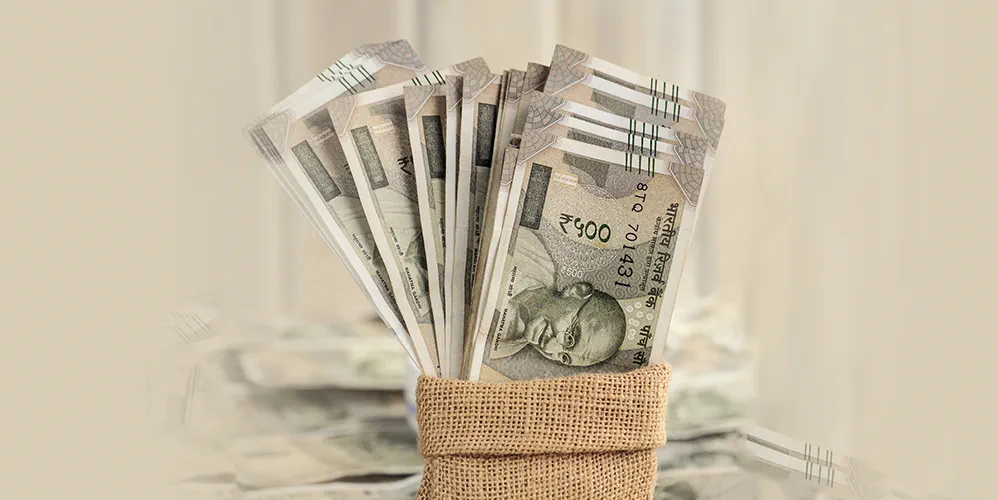
An Introduction to Dividends and Their Importance in Investing
13 Nov 2024

Table of Content
-
Introduction to Dividends: What They Are and Why They Matter
-
The Basics of Dividend Investing: How It Works and Why Investors Use It
-
Different Types of Dividends: Cash, Stock, Property, and Others
-
Understanding Dividend Yield and How to Calculate It
-
Factors Affecting Dividend Payments: Company Performance, Market Conditions, and More
-
Conclusion
Introduction to Dividends: What it means and why it matters
A dividend is a portion of a company's earnings distributed to its shareholders as a reward for their investment. Dividends are typically paid in cash, but they can also be issued as additional shares of stock or other property. Understanding what is dividend is crucial for investors looking to generate income from their investments. Dividends play a significant role in the overall return on investment, making them an essential aspect of financial planning. They represent a tangible benefit of holding a company's stock, rewarding investors for their confidence and investment in the business.
The Basics of Dividend Investing: How It Works and Why Investors Use It
What is meant by dividend investing? Dividend investing involves purchasing stocks that pay regular dividends to shareholders. This strategy is popular among investors seeking a steady income stream in addition to potential capital gains from the appreciation of the stock price. Investors often reinvest dividends to purchase more shares, which can lead to compound growth over time. This reinvestment strategy is known as the "snowball effect," where the accumulation of additional shares can significantly increase the value of the investment over the long term.
Dividend-paying stocks are typically those of well-established companies with a history of stable earnings and consistent dividend payouts. These companies are often found in sectors like utilities, consumer goods, and financial services, which tend to be less volatile than growth-oriented sectors.
Also Read: Understanding Dividend Yield Mutual Funds and Their Advantages
Different Types of Dividends: Cash, Stock, Property, and Others
There are several types of dividends that companies may distribute to their shareholders:
1. Cash Dividends :
The most common form of dividends, paid in cash to shareholders. This type of dividend provides immediate income and is usually distributed on a regular basis, such as quarterly or annually.
2. Stock Dividends :
Additional shares of stock are distributed instead of cash. This increases the number of shares owned by the shareholder, which can lead to greater capital gains if the stock price appreciates.
3. Property Dividends :
Non-cash dividends that can be in the form of physical assets or investment securities. Although less common, property dividends can offer unique benefits, such as transferring ownership of non-liquid assets.
4. Special Dividends :
One-time payments made by a company, often due to exceptional profits or significant events. These are not regular payments and are usually larger than normal dividends, reflecting extraordinary circumstances.
Understanding what the definition of dividend in its various forms is helps investors make informed decisions about their investment strategies. Each type of dividend has different tax implications and benefits, which can impact an investor's overall return.
Understanding Dividend Yield and How to Calculate It
Dividend yield is a financial ratio that shows how much a company pays out in dividends each year relative to its stock price. It is calculated using the formula:
Dividend Yield= (Annual Dividends Per Share/ Price Per Share) X 100
For example, if a company pays annual dividends of ₹5 per share and the current stock price is ₹100, the dividend yield would be:
Dividend Yield= (Rs. 5/Rs.100)X 100 = 5%
Understanding what do you mean by dividend yield and how to calculate it can help investors assess the income potential of their investments. A higher dividend yield indicates a higher return on investment, assuming the company's stock price remains stable or appreciates.
Investors often use dividend yield as a key metric to compare different dividend-paying stocks. However, it's important to consider the sustainability of the dividend. A very high dividend yield may indicate potential issues with the company's financial health or an unsustainable payout ratio.
Factors Affecting Dividend Payments: Company Performance, Market Conditions, and More
Several factors can influence a company's ability to pay dividends:
1. Company Performance :
Profitable companies with stable earnings are more likely to pay regular dividends. Companies with consistent revenue and earnings growth can sustain and even increase their dividend payouts.
2. Market Conditions :
Economic downturns or financial crises can lead to reduced dividend payments or suspensions. Companies may conserve cash during tough economic times to maintain financial stability.
3. Company Policies :
Some companies prioritize reinvesting earnings into growth rather than paying dividends. This is often seen in high-growth industries where reinvestment can lead to greater long-term returns.
4. Legal and Regulatory Requirements :
Legal restrictions can sometimes impact a company's dividend policies. Regulatory bodies may impose limits on dividend payments to ensure that companies maintain adequate capital reserves.
Also Read: How to Calculate NAV in Mutual Funds: A Step-by-Step Guide
By understanding what dividends mean and the factors affecting dividend payments, investors can better predict and manage their income streams. It's essential to keep an eye on a company's dividend history and payout ratio, which is the proportion of earnings paid out as dividends. A healthy payout ratio generally indicates a sustainable dividend policy.
Conclusion
In conclusion, dividends are a vital component of investing, providing a steady income stream and contributing to the total return on investment. Understanding what is dividend, various types of dividends, how to calculate dividend yield, and the factors affecting dividend payments can help investors make informed decisions. Whether you're a new investor or an experienced one, incorporating dividend-paying stocks into your portfolio can enhance your investment strategy and provide financial stability.
Popular Articles
Tag Clouds
Related Articles





IMPS in Banking – Full Form, Features, Transaction Limit, Charges & how it works




Unlocking Financial Efficiency: How Cash Management Services Transform Banking

-
Disclaimer
The contents of this article/infographic/picture/video are meant solely for information purposes and do not necessarily reflect the views of Bank of Baroda. The contents are generic in nature and for informational purposes only. It is not a substitute for specific advice in your own circumstances. Bank of Baroda and/ or its Affiliates and its subsidiaries make no representation as to the accuracy; completeness or reliability of any information contained herein or otherwise provided and hereby disclaim any liability with regard to the same. The information is subject to updation, completion, revision, verification and amendment and the same may change materially. The information is not intended for distribution or use by any person in any jurisdiction where such distribution or use would be contrary to law or regulation or would subject Bank of Baroda or its affiliates to any licensing or registration requirements. Bank of Baroda shall not be responsible for any direct/indirect loss or liability incurred by the reader for taking any financial decisions based on the contents and information mentioned. Please consult your financial advisor before making any financial decision.
Green Financing in India: Loans, Benefits & Eco-Friendly Investment Options
Green financing is becoming an essential part of India's transition to a sustainable future. As the country strives to reduce its carbon footprint and meet environmental goals, green financing offers a pathway for individuals and businesses to adopt eco-friendly solutions. This blog explores green financing options, including eco-friendly loans and Bank of Baroda's green finance offerings.
Ways to Check FASTag Balance
FASTag is an electronic toll collection system in India, implemented by the National Highway Authority of India (NHAI). It is designed to eliminate the need for stopping at toll plazas to pay toll fees, thereby reducing traffic congestion and enhancing the convenience of road users. FASTag uses Radio Frequency Identification (RFID) technology for making toll payments directly from the prepaid account linked to it.

